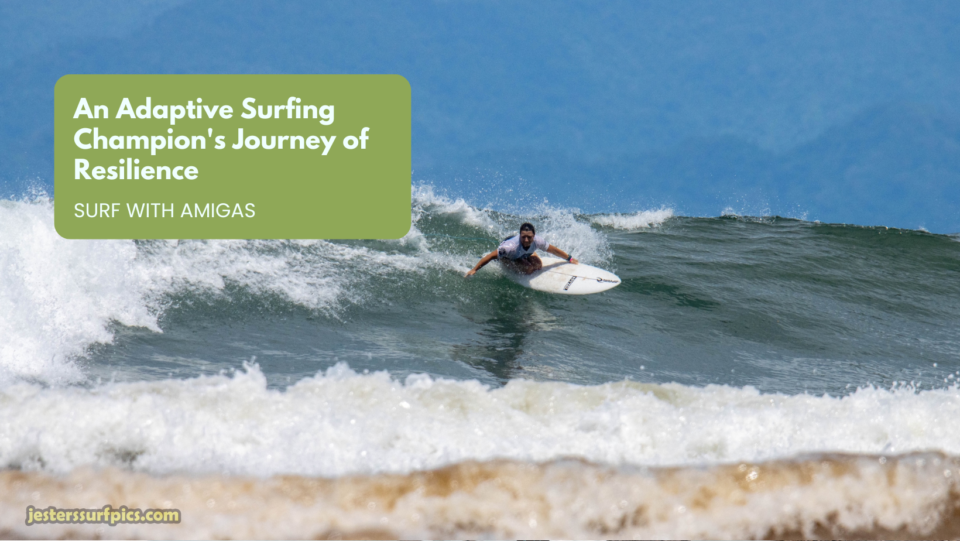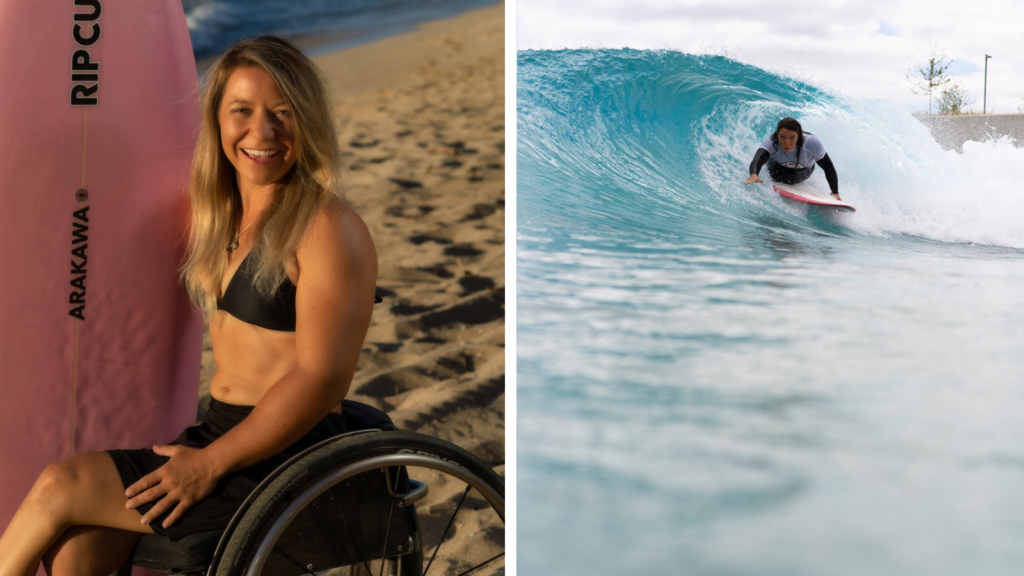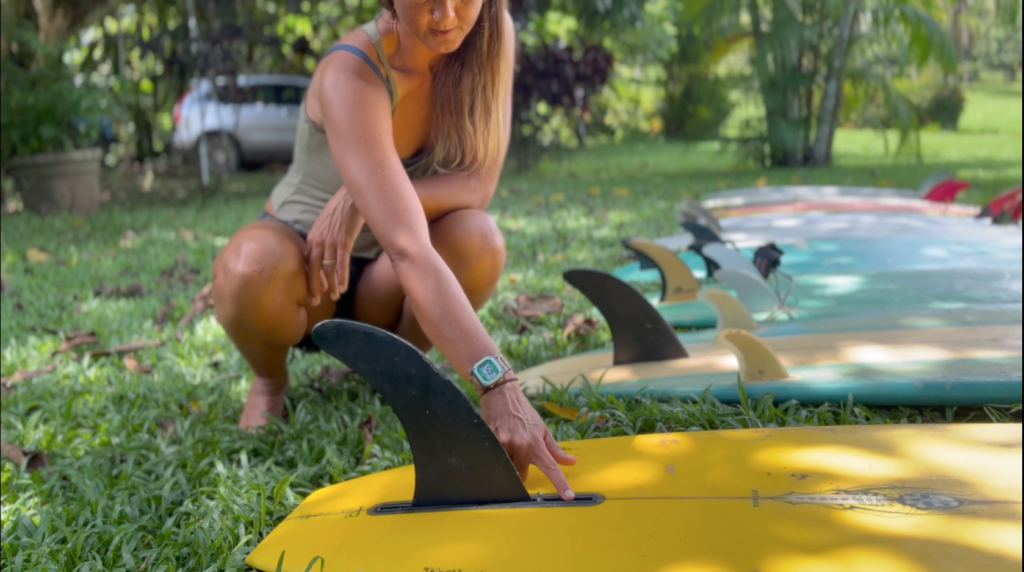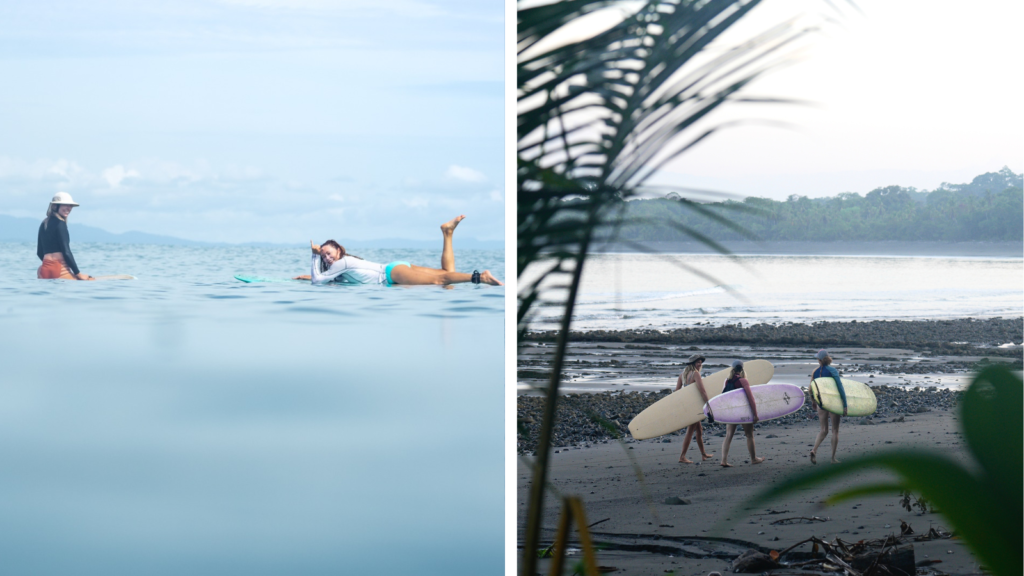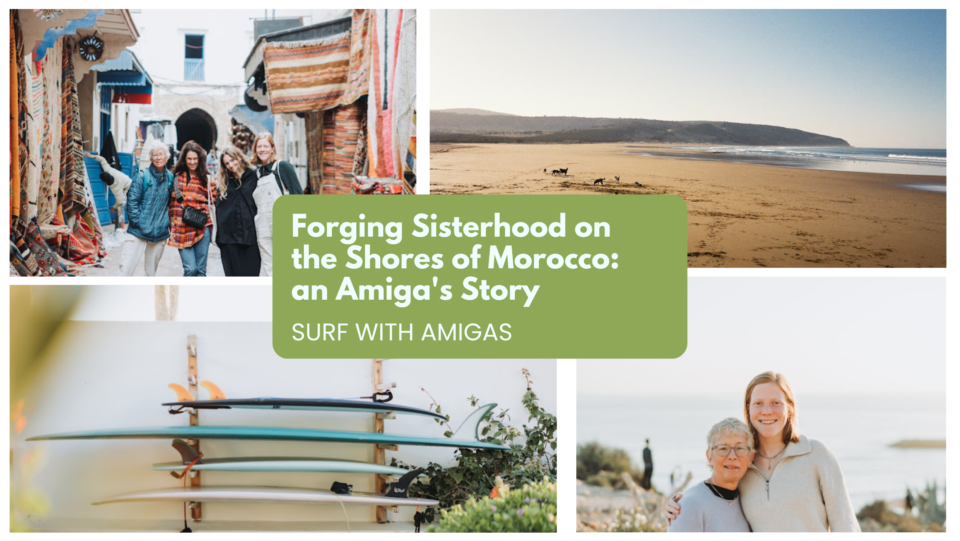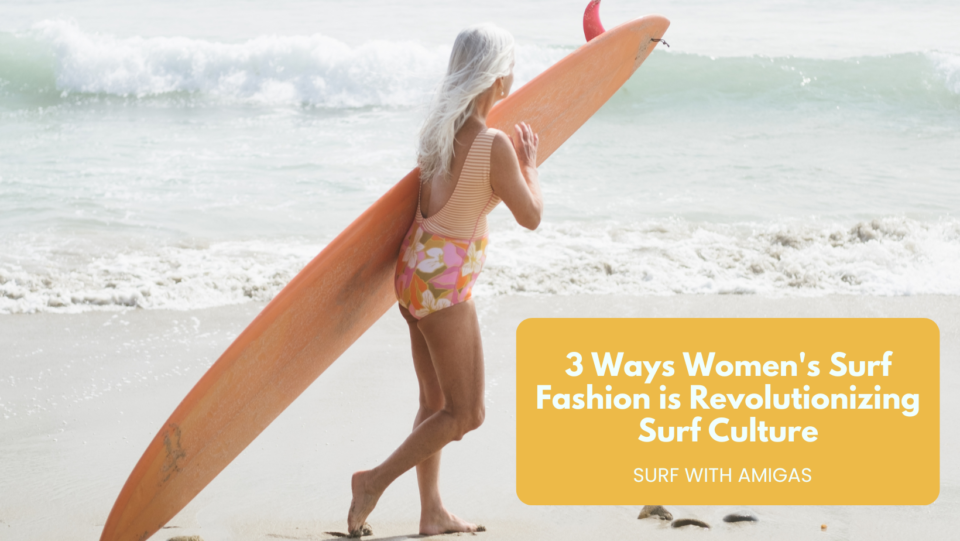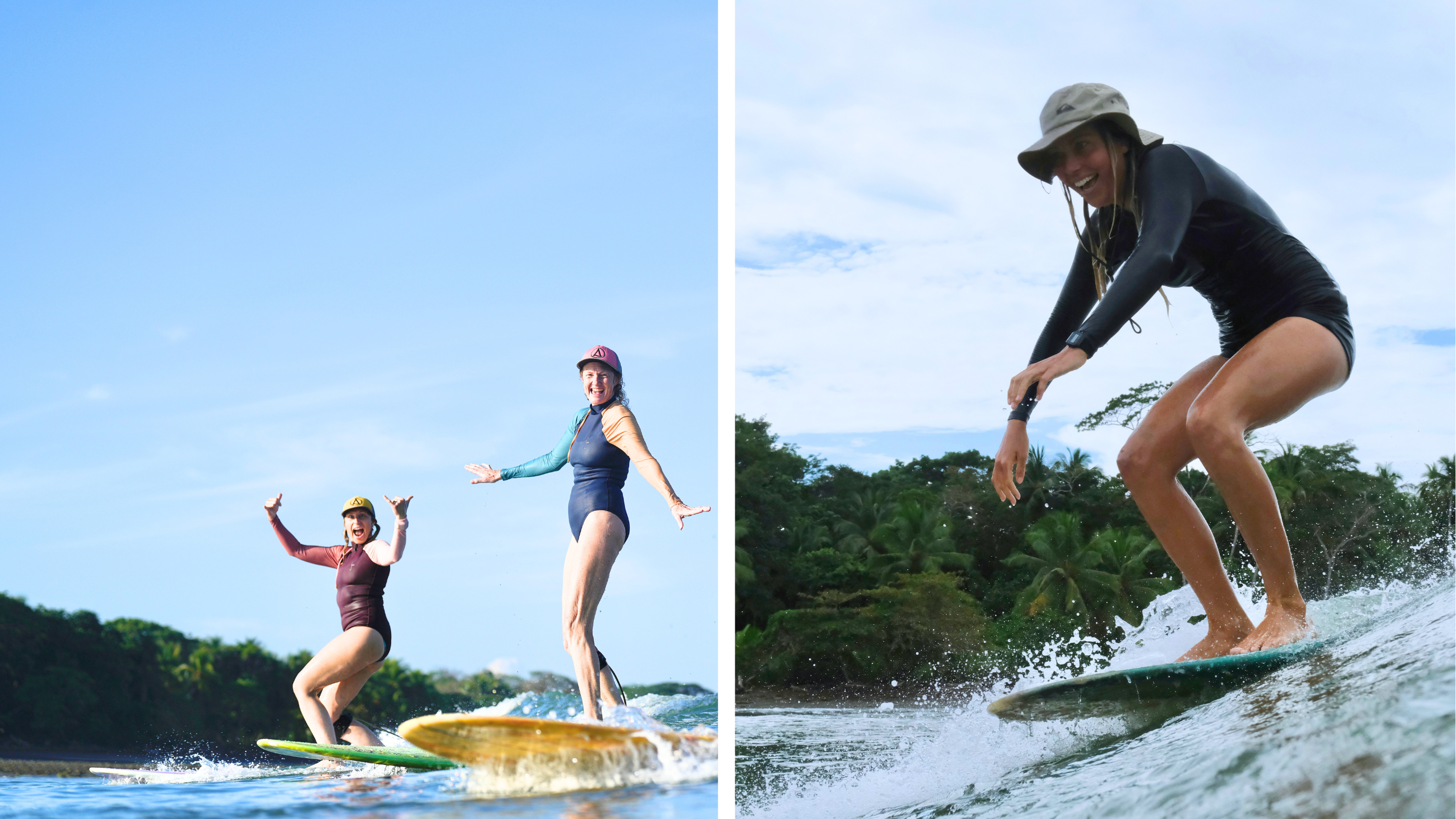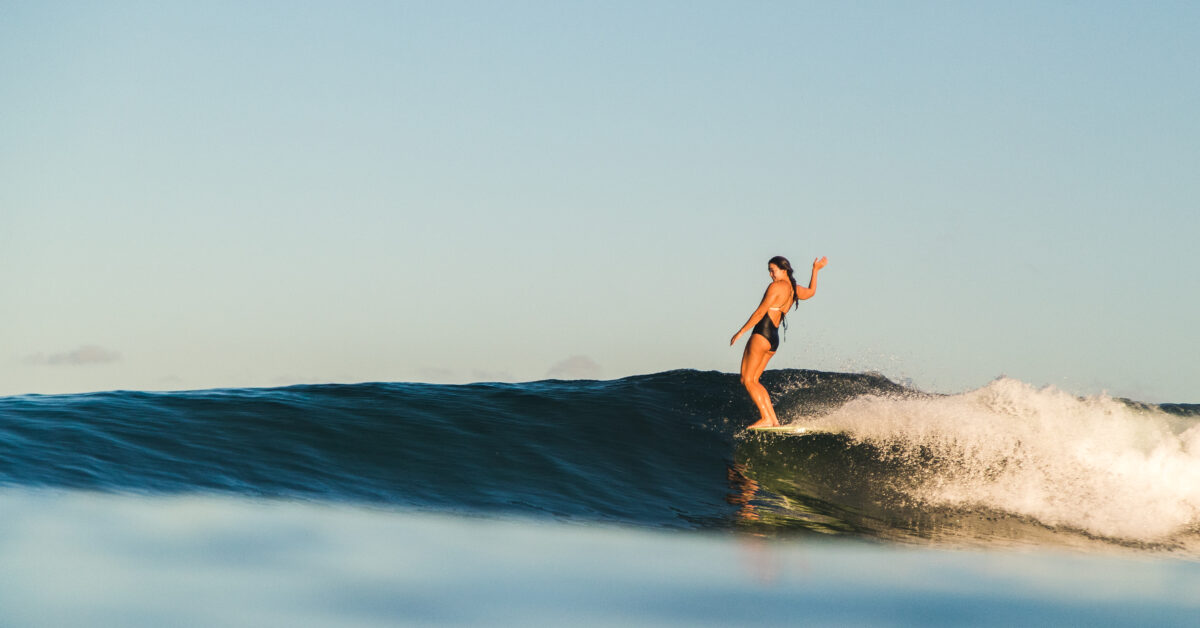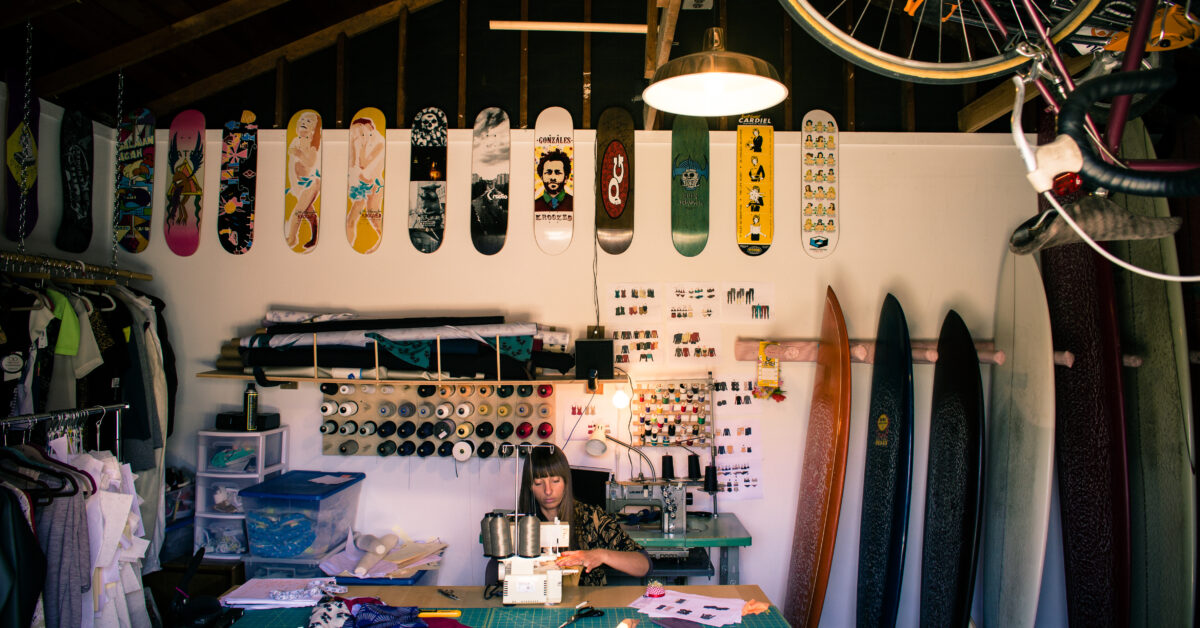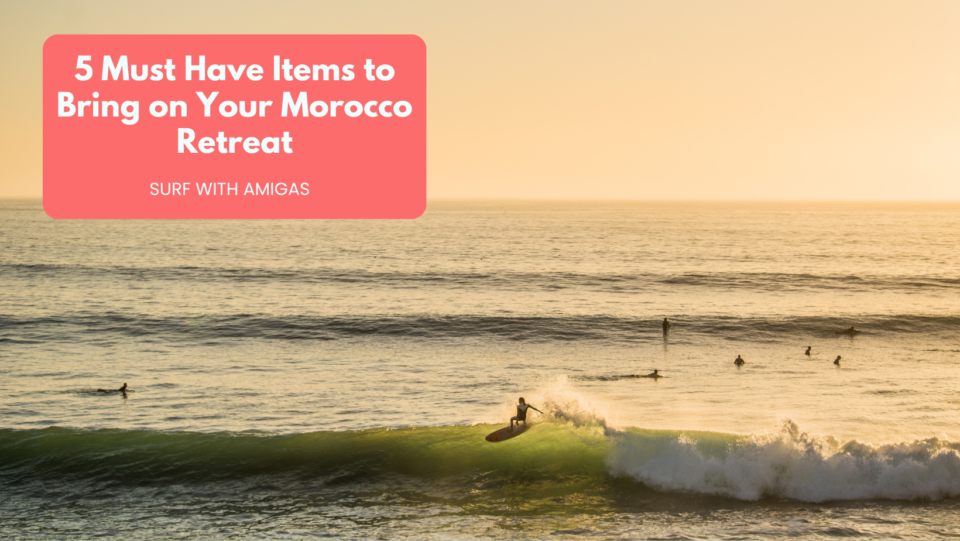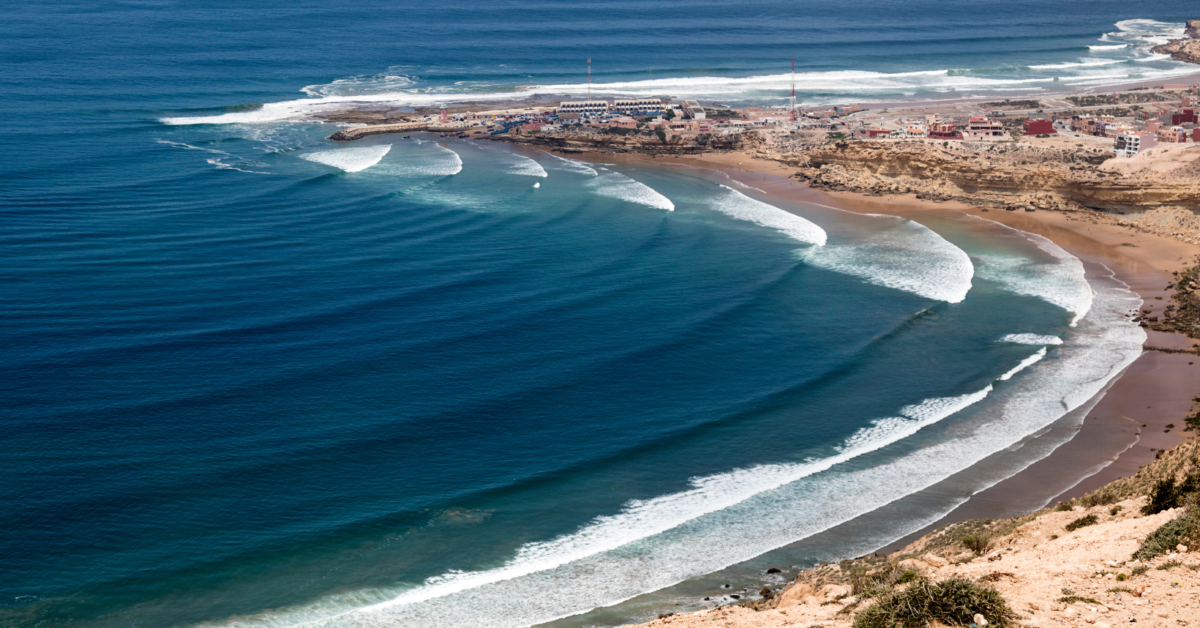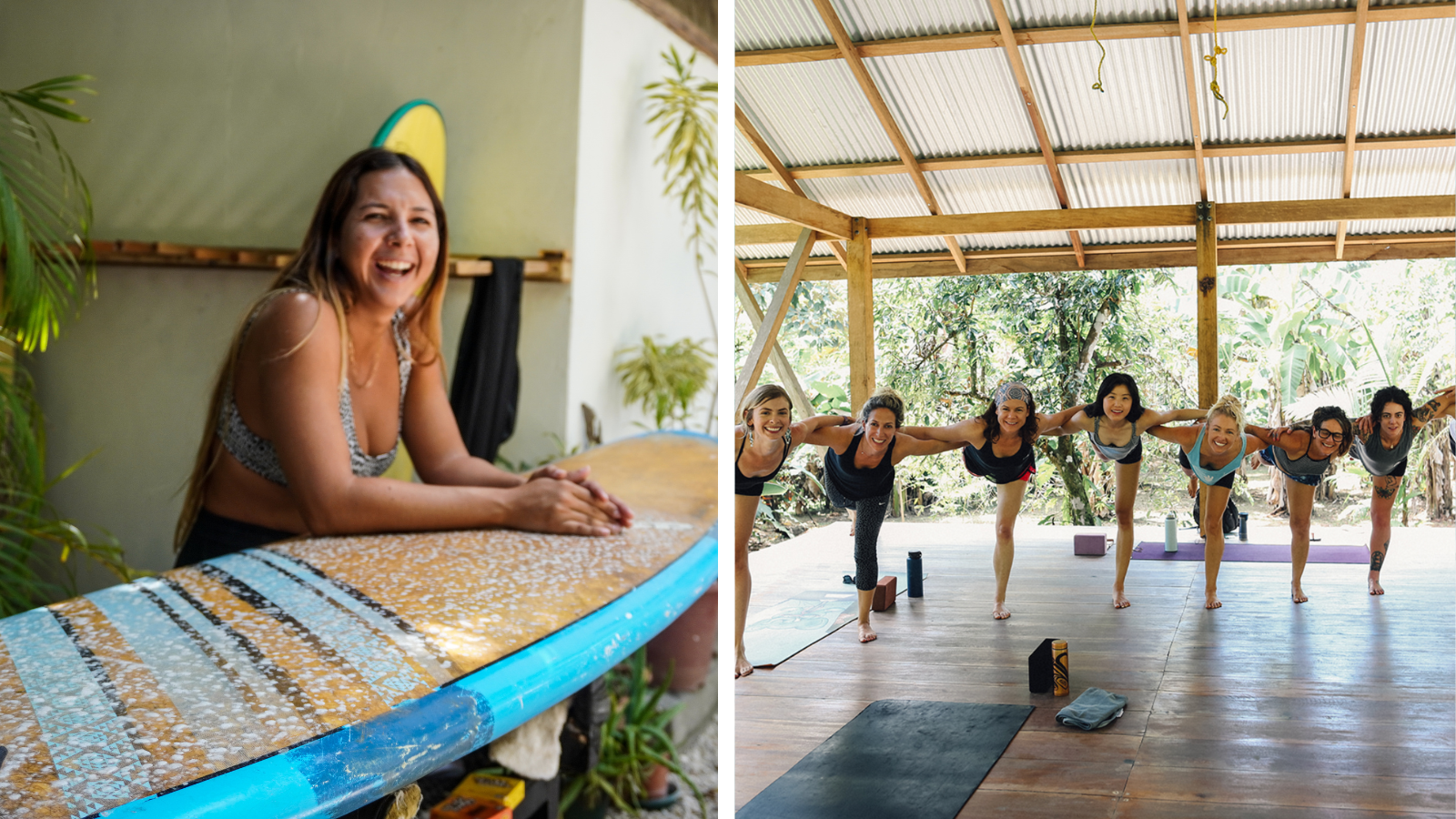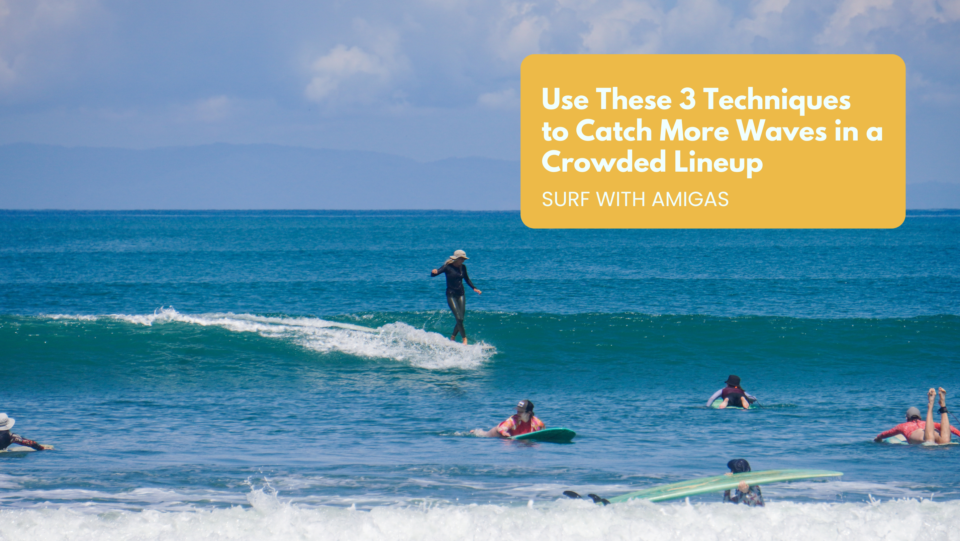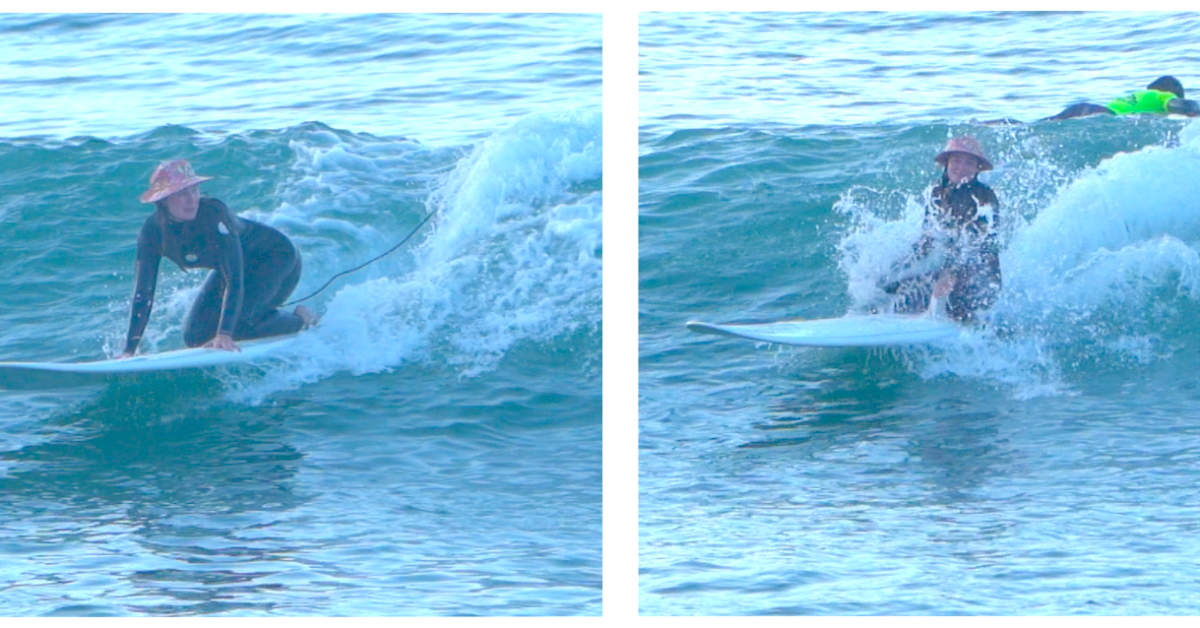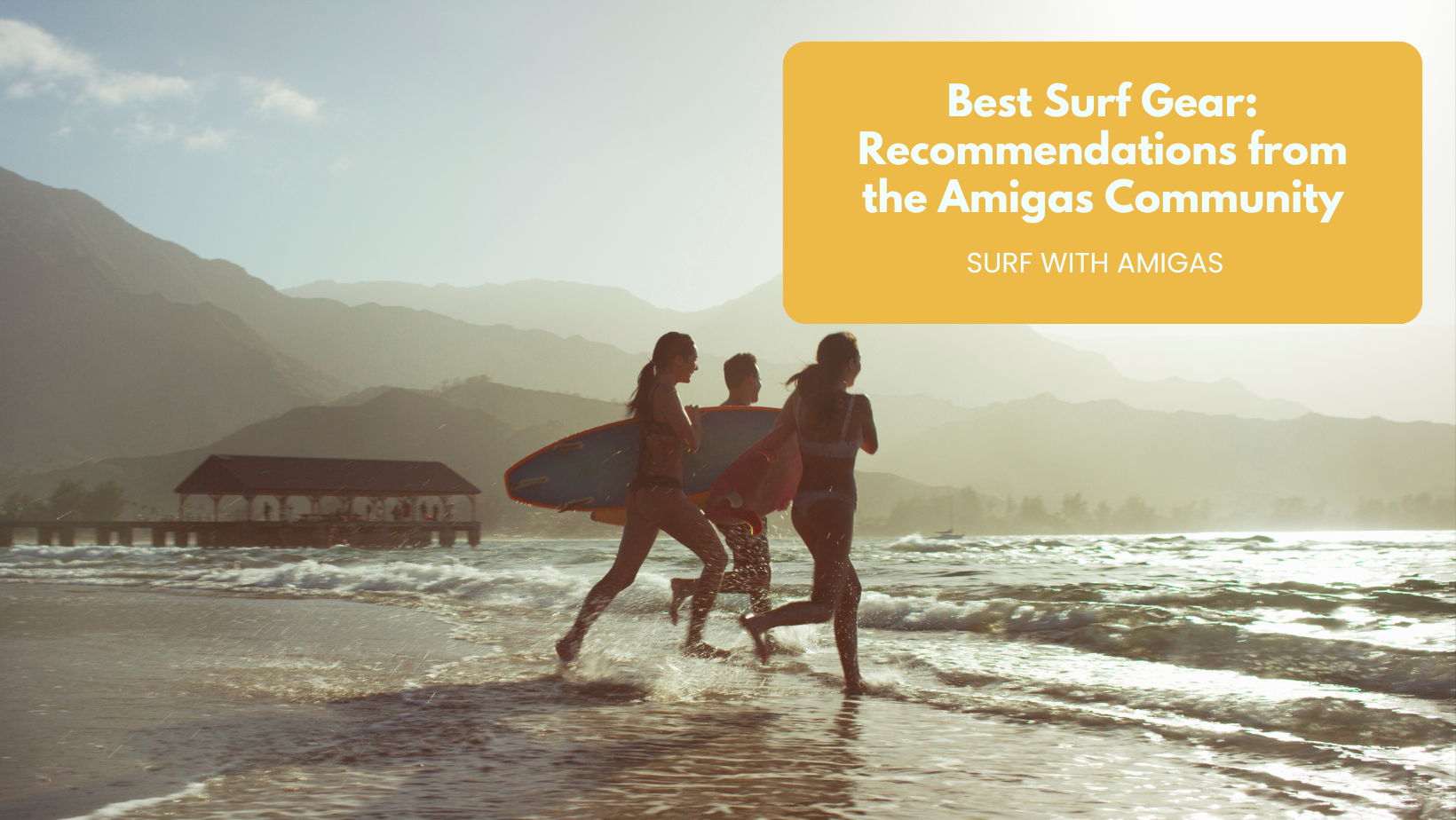Halfway through recording “Second Breakfast,” my first-ever podcast, Holly Beck, Surf With Amigas (SWA) founder and co-owner, asked me a heavy-duty question, and I was…at a loss. I hate to admit it, but I froze. Twice. And then I fibbed.Three flubs in my first podcast. Nice. I froze because when I sat myself next to Holly – former pro surfer, entrepreneur – and next to other interview guests – the Big Wave surfer, the shark-attack survivor – I felt like the mere mortal in this podcast line-up. Mere mortal as in: I surf 10 to 15 days a year. As in, I live in DC, which is a four-hour drive from the closest surf break where conditions are notoriously fickle. As in, I’ve been surfing for 10 years, and I have yet to consistently paddle into my own wave.
With the equivalent of an SWA merit badge as a seven-time Amiga, I am the classic Vacation Surfer. We recorded the podcast just after I’d returned from nearly a month touring Indonesia. There, I surfed the mythical “T-Land” break with the Amigas. The post-trip adjustment took longer than expected, though. The sensory overload of Indonesia wrung me out. I felt exhausted and exhilarated at the same time. Still, I had pictures to show! Stories to tell! I couldn’t shut up about “Indo.” So, when Holly asked me to record the podcast, I was pumped. And then I froze. Now, with some rest and reflection – and away from the pressure of a microphone – here’s what I wish I’d shared in the podcast.
Holly’s first “Freeze Question”: What’s the craziest thing that’s happened to me on an Amigas trip? This, from the woman who nonchalantly describes starting SWA while living “feral” in remote Nicaragua. My crazy stories? Hmmm. The giant scorpion catching me “indisposed” in the baño at the southern Costa Rica site? The super-sized flying grasshopper dive-bombing my room in northern Costa Rica? Not exactly “crazy.”
I’ve since realized I can’t answer that question because my Amigas trips haven’t been over-the-top, literal cliffhangers. They’ve taken shape In an entirely different way. Rather, each trip is sprinkled with delightful or exhilarating surprises. Surprises now eternally imprinted on my brain – bright, sparkly, and one-of-a-kind.
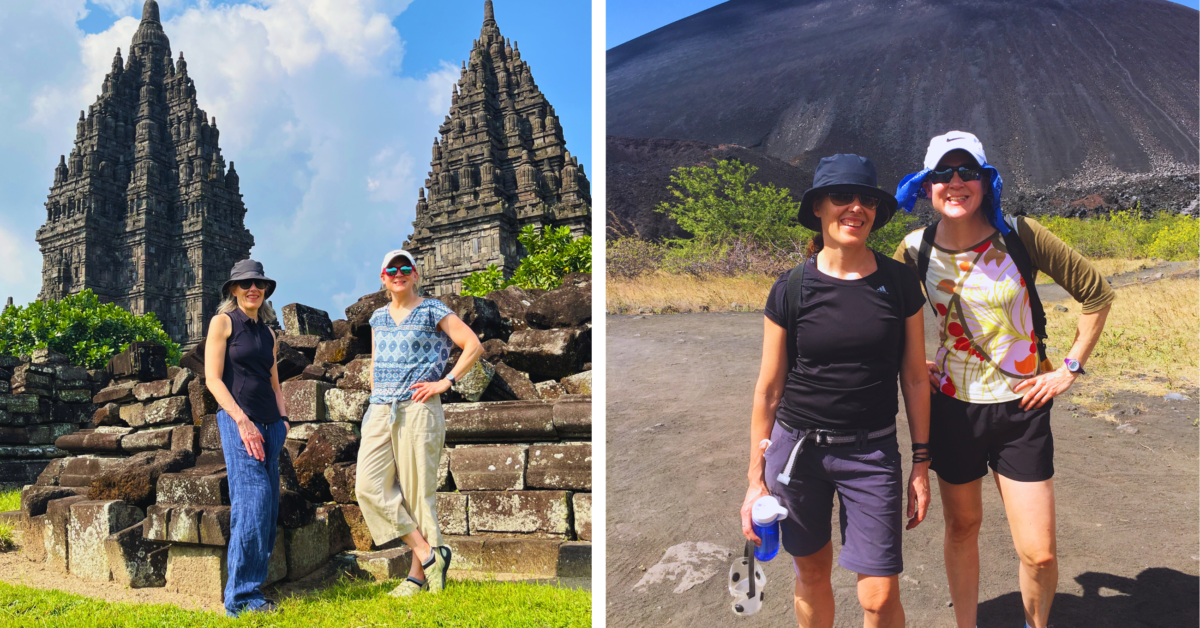
Like the Thanksgiving-week camp in northern Costa Rica when the resort hostess surprised our group with an authentic holiday meal. Or when SWA co-owner Jackie George threw us campers a “Galentine’s Day” celebration during a southern Costa Rica camp that fell on February 14th . And in Mexico, the time we tiptoed past napping crocodiles to get to the beach. Or in northern Nicaragua, when we tried something called “volcano boarding,” by hurtling seated down the side of a dormant lava-maker with nothing to protect us besides a makeshift wooden toboggan; thick, orange, cotton jumpsuits; plastic painters’ goggles; and the heels of our sneakers to dig into the hillside’s black grit to brake.
And then there’s Morocco, my favorite Amigas surf spot, with its wide, undeveloped bay surrounded by sand-colored cliffs, and where I caught my longest ride yet. I just kept gliding along the wave, while shouting in my head, “I’m doing it! I’m really doing it!” all the way to the beach. For me, that long ride represented a hard-won achievement. I actually choked up in the whitewash afterwards. It’s these moments that I will not trade any day for “crazy.” Holly’s second “Freeze Question” was even harder: How has surfing changed my life? During the recording, I fumbled for a response, landing clumsily on “finding my ‘thing.’” What I really wanted to say was, “Can I get back to you on that?” In retrospect, I can answer this pretty quickly: Surfing hasn’t changed my daily life. At least, not yet! I mean, I’m still working my office job in D.C.
Perhaps the question I can better expand on is: What have I learned from surfing? Easy. Three things. First, my body keeps doing more than I think it can. Each surf trip, Mother Ocean delivers the beat-down. I get banged up and bruised. My muscles ache. And yet, my body holds up. I’m exhausted, but I feel strong, and alive, and proud of myself.
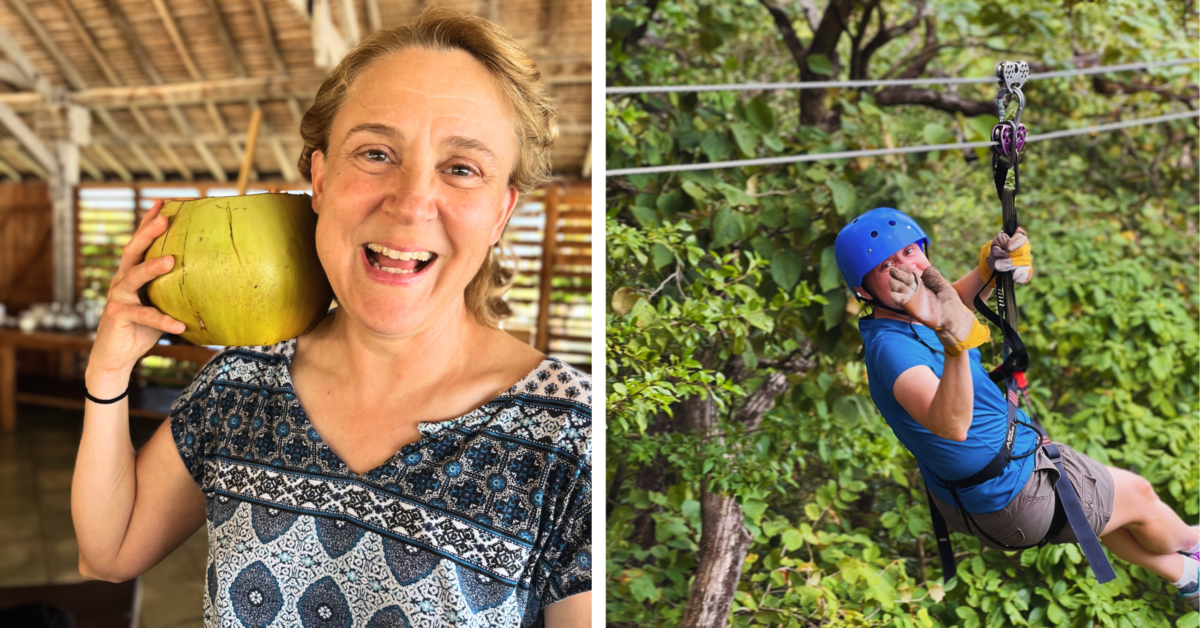
Next, the first time I heard another Amiga describe herself as a “vacation surfer” I felt
immensely….relieved. I thought, “Bingo! That’s what I am! It has a name!”
Identifying as a Vacation Surfer allowed me to be OK with not having become a big-time charger After. All. Those. Amigas. Trips. I learned calling myself a Vacation Surfer let me shake off the self-induced pressure and shame. And the last thing I’ve learned? Here, I struggle to share my thoughts in a way that doesn’t sound cheesy or well-worn. But with that…
On a wave, my board and I feel synced with the ocean. It’s a brief flash of beauty and joy and accomplishment and freedom. I imagine this is what flying feels like. And this feeling reveals a glimpse into what drives surfers’ obsession – the hunger, the excitement, the fear, and my favorite – the euphoria.
And then finally, as the podcast wrapped up, there was the Fib, which unexpectedly appeared with a new question. I hadn’t planned on fibbing. The query was simple enough: What special items do I pack for my surf trips? My mind instantly raced. Was I going to tell the Holly Beck, who’s jetted around the world for years with her boards and her bag, that I actually had a three-page packing list…in Excel? Heck no. Instead, I offered her one measly “hot tip”: packing cubes. Ugh. Snooze alert.
Truth is, I may be “just” a Vacation Surfer, but I am an expert travel packer. I’m also a Boy Scout; I like to be prepared. I wrote the Excel packing list because I kept forgetting what I’d packed on the prior surf trip. The list includes my “surf wardrobe” because I’ve figured out which items work, and how many, for a week-long surf trip. Besides swimwear and basics, here are the things I pack:
Jacquie’s Amiga Trip Essentials
- Rashguards and surf leggings for sun and scrape protection.
- Surf booties for my soft, city feet.
- Small purse-size notebook for video-coaching notes. I’ve collected them from multiple trips.
- Portable Kleenex packs, and handwipes, because you never know what the bathroom situation will be during travel. See: squat toilets.
- Eye mask and earplugs. On Amigas trips, there always seems to be a fiesta thumping late at night, or some rooster going off at 4am.
- Pepto tabs and a prescription of azithromycin in case of a serious stomach trouble. Tums, in case of too many margaritas…
- Pain reliever, and a cold-and-allergy-meds starter pack, because some Amigas camps are a multi-hour drive to the nearest pharmacy.
- Icy Hot and a sampler of first aid creams – anti-itch, anti-burn, antibiotic.
- Extra contact lenses
- Gallon-size Ziploc bags, which are useful for everything – snacks, receipts, liquids, souvenirs.
- Large plastic shopping bag for dirty or wet clothes.
- Washcloth. Some cultures don’t prefer them.
- Covid tests, especially if going someplace remote.
- Back-up phone charger and electric plug converters.
- Two or three wire hangers. Amigas’ accommodations are clean and comfortable, but they can be spare. I like to hang a few things.
- Thin, smaller, extra backpack for taking gear to the beach, or carrying bulky souvenirs (think: packs of Costa Rican coffee).
I fit all this in one carry-on suitcase, and one large backpack! And, yes, I’m happy to share the full list. Just don’t tell Holly. And with writing this blog, dear reader, I am now unburdened from my post-podcast guilt. Of freezing. And fibbing. I’ve even booked my next SWA trip.
Who knows? Maybe I’ll meet you at a future camp. If that’s the case, I’ll be the Vacation Surfer digging in hard, still trying to catch my own wave.

